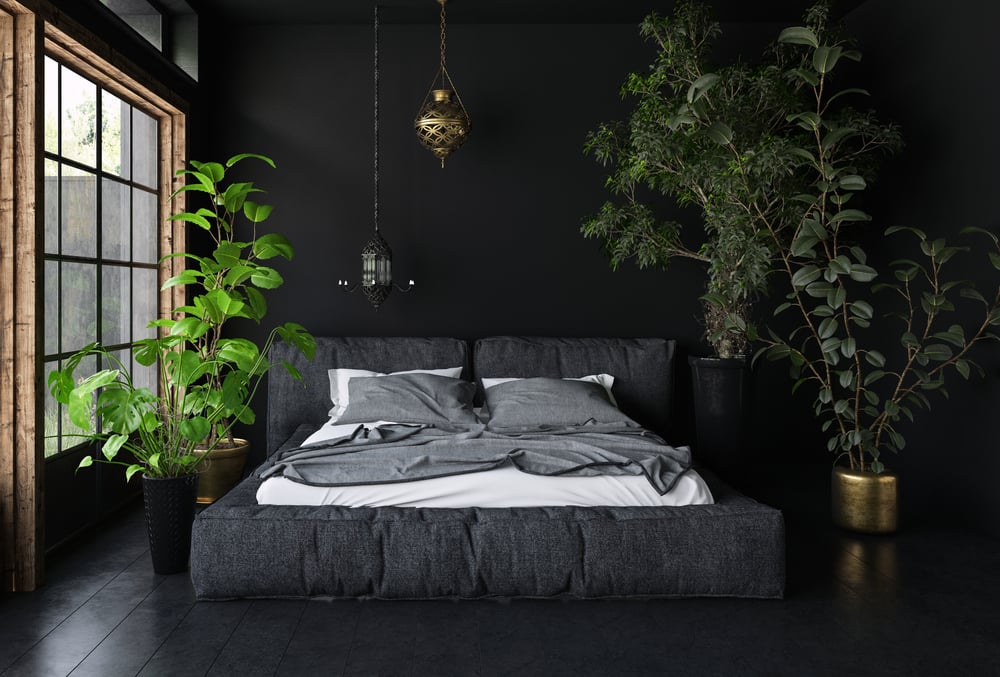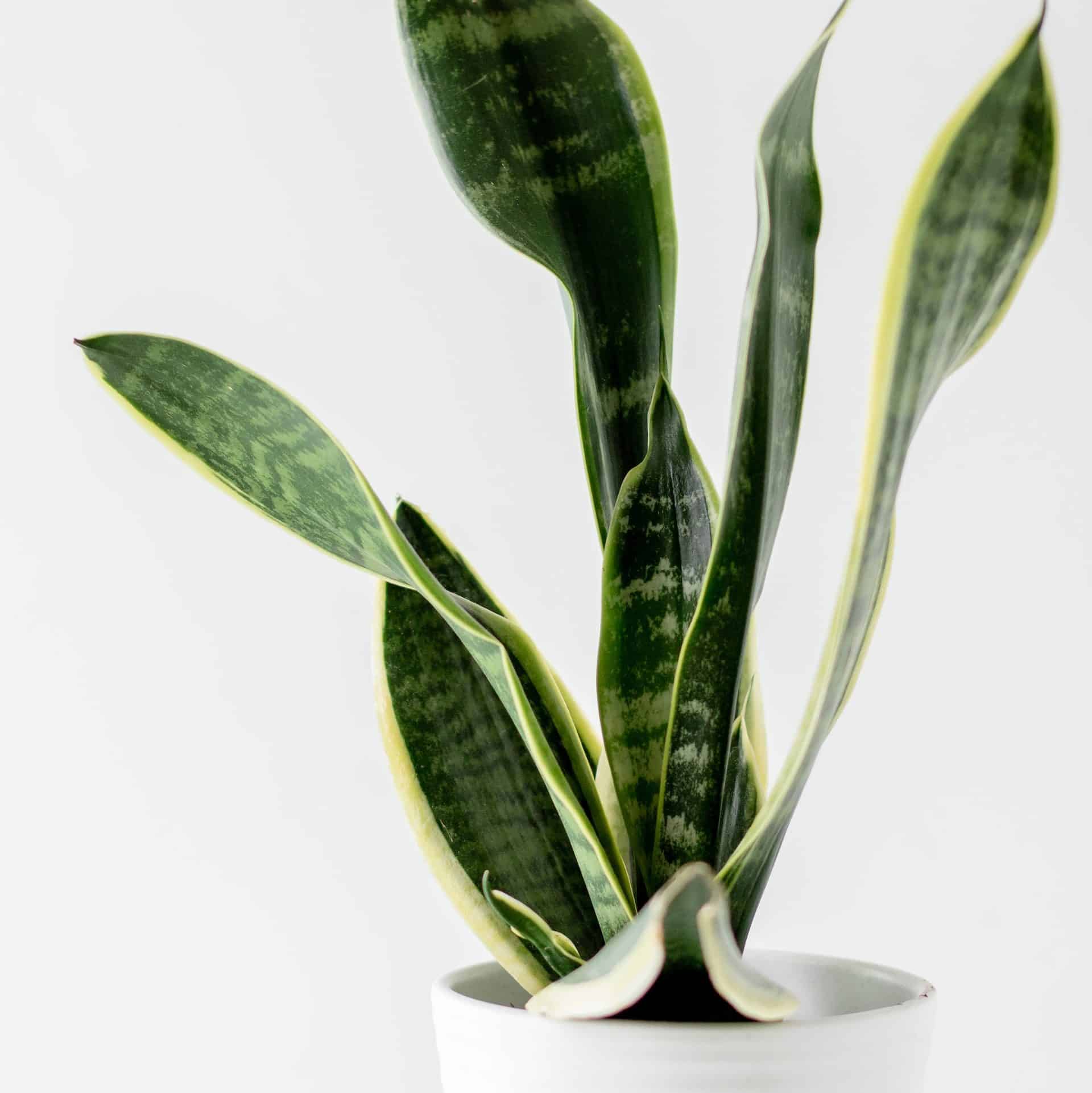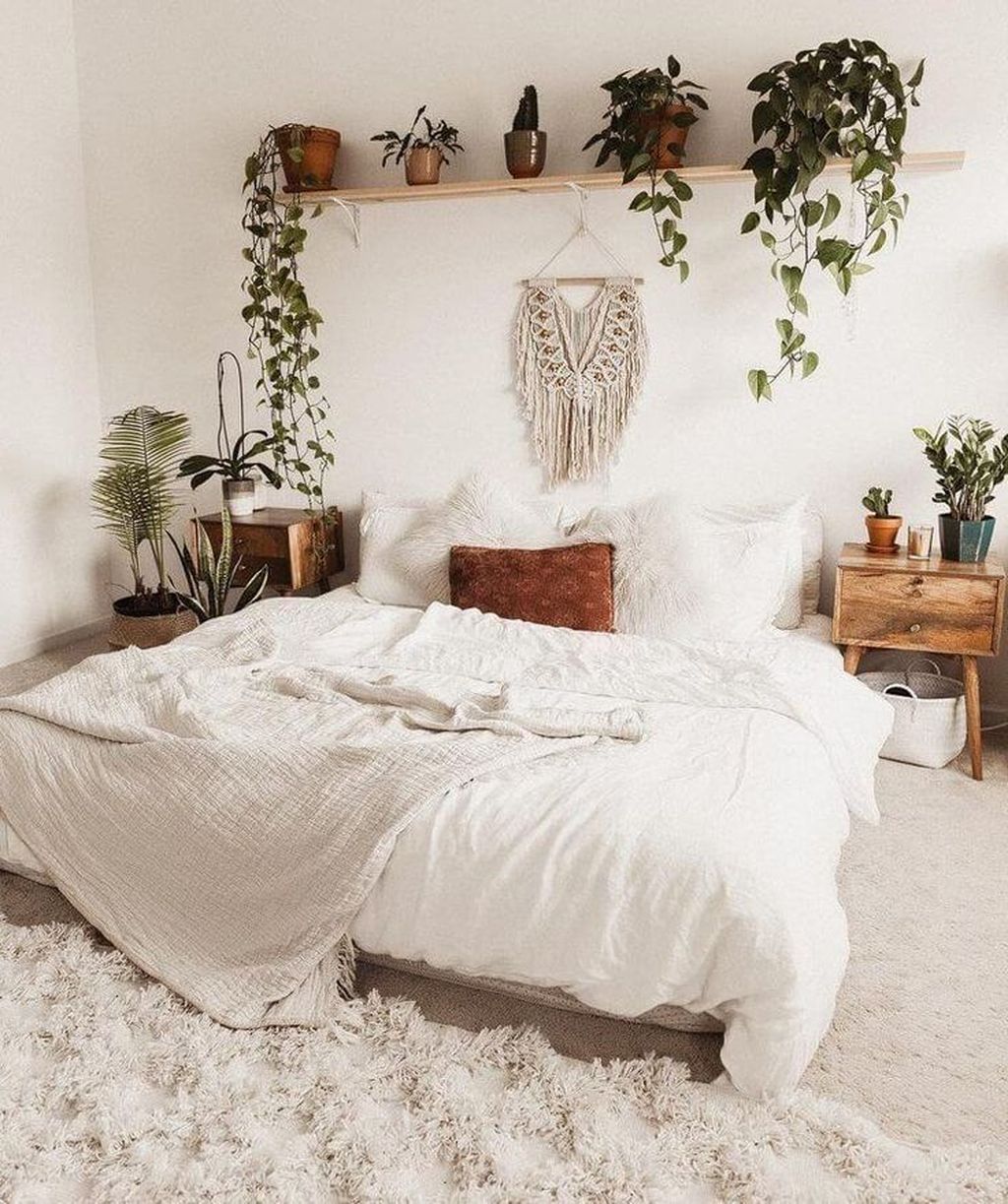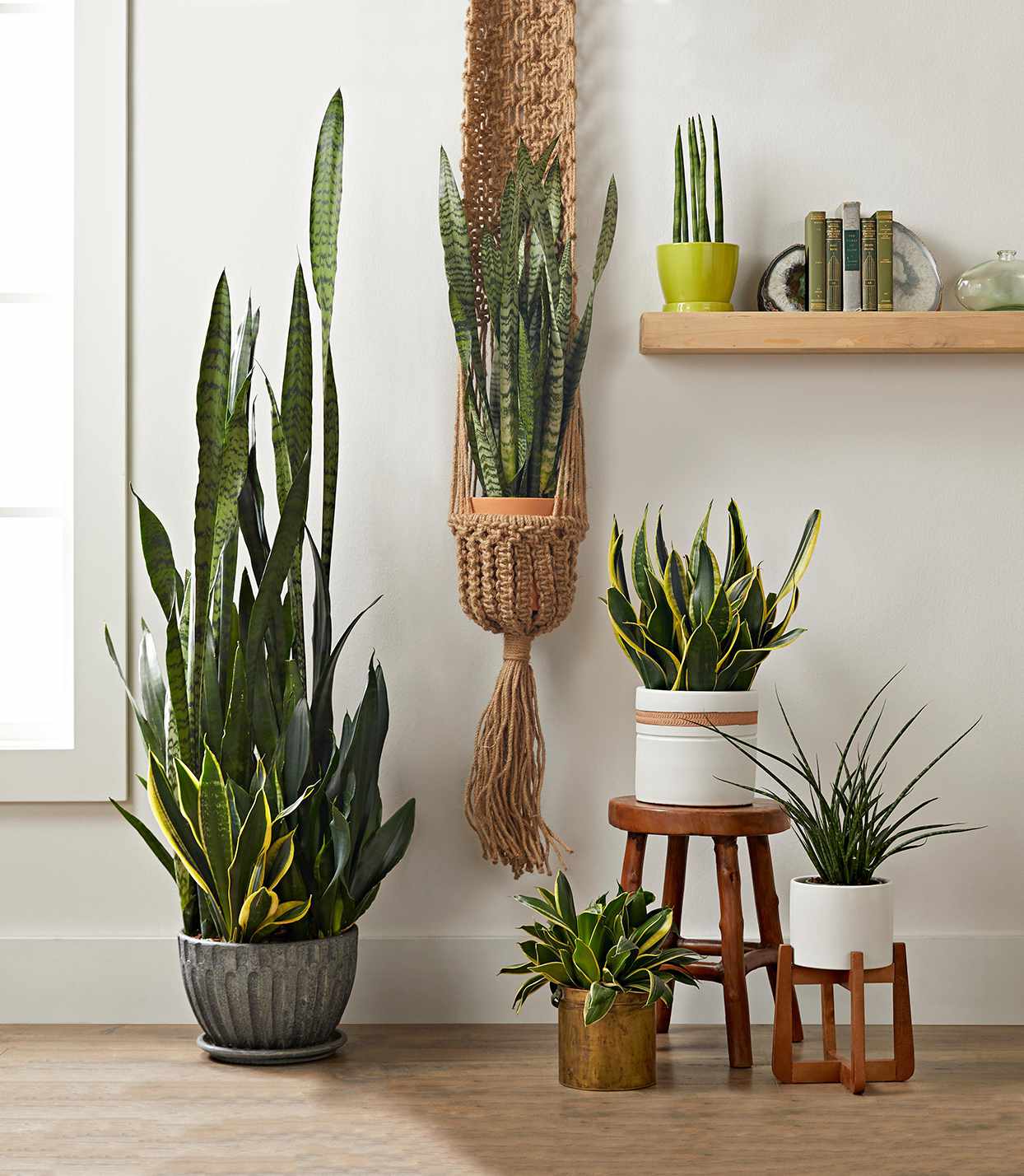Why Having Plants in the Bedroom is a Game-Changer for Better Sleep
Having plants in the bedroom can be a game-changer for those struggling with sleep. Not only do plants purify the air and improve the aesthetic appeal of the room, but they also have a profound impact on our mental and physical well-being. Studies have shown that being around plants can reduce stress levels, promote relaxation, and even help regulate the body’s circadian rhythms.
One of the primary benefits of having plants in the bedroom is their ability to improve air quality. Plants absorb pollutants and toxins from the air, replacing them with oxygen and promoting a healthier breathing environment. This is especially important in the bedroom, where we spend a significant amount of time sleeping and recharging. By incorporating plants into the bedroom, individuals can wake up feeling refreshed and revitalized, rather than groggy and sluggish.
In addition to their air-purifying properties, plants also have a profound impact on our mental health. The calming effects of being around plants can help reduce stress and anxiety, promoting a sense of relaxation and tranquility. This is especially important in the bedroom, where a peaceful and calming environment is essential for a good night’s sleep. By incorporating plants into the bedroom, individuals can create a serene oasis that promotes relaxation and rejuvenation.
When it comes to selecting the best plant to have in the bedroom, there are several options to consider. Some popular choices include Snake Plants, Spider Plants, and Peace Lilies, all of which are known for their air-purifying properties and low-maintenance requirements. These plants are perfect for busy individuals who want to reap the benefits of having plants in the bedroom without the hassle of constant upkeep.
By incorporating plants into the bedroom, individuals can create a sleep-conducive environment that promotes relaxation, rejuvenation, and improved air quality. Whether you’re struggling with sleep or simply looking to enhance the aesthetic appeal of your bedroom, plants are a simple and effective solution. So why not give it a try? Choose a plant that fits your lifestyle and preferences, and start enjoying the benefits of a plant-filled bedroom tonight.
How to Choose the Perfect Plant for Your Bedroom Sanctuary
When it comes to selecting the best plant to have in the bedroom, there are several factors to consider. One of the most important considerations is low-maintenance requirements. Busy individuals may not have the time or energy to care for high-maintenance plants, so it’s essential to choose plants that are easy to care for and can thrive in a variety of conditions.
Another important factor to consider is air-purifying properties. Plants that are known to purify the air, such as Snake Plants, Spider Plants, and Peace Lilies, are excellent choices for the bedroom. These plants can help remove pollutants and toxins from the air, promoting a healthier breathing environment and improving sleep quality.
Aesthetic appeal is also an important consideration when choosing a plant for the bedroom. Plants come in a variety of shapes, sizes, and colors, so it’s essential to choose a plant that fits with the bedroom’s decor and style. For example, a sleek and modern bedroom may benefit from a minimalist plant like a Succulent or Cactus, while a more traditional bedroom may benefit from a lush and green plant like a Fern or English Ivy.
Some popular plants that fit these criteria include Snake Plants, Spider Plants, and Peace Lilies. These plants are known for their air-purifying properties, low-maintenance requirements, and aesthetic appeal. They are also relatively easy to find and purchase, making them a great option for those new to plant parenthood.
When choosing a plant for the bedroom, it’s also essential to consider the amount of light the plant will receive. Some plants, like Succulents and Cacti, can thrive in low-light conditions, while others, like Ferns and English Ivy, require more light to photosynthesize. Make sure to choose a plant that fits with the bedroom’s lighting conditions to ensure it thrives and continues to provide benefits.
By considering these factors, individuals can choose the best plant to have in the bedroom and create a serene oasis that promotes relaxation, rejuvenation, and improved sleep quality. Whether you’re looking for a low-maintenance plant or a plant with air-purifying properties, there are many options to choose from. So why not start exploring and find the perfect plant for your bedroom sanctuary today?
The Top 5 Plants to Promote a Restful Night’s Sleep
While many plants can promote a restful night’s sleep, some stand out for their unique properties and benefits. Here are the top 5 plants that are scientifically proven to improve sleep quality, including Lavender, Valerian, and Jasmine.
Lavender is a popular choice for promoting relaxation and reducing stress. The scent of lavender has been shown to slow down heart rate and promote a sense of calm, making it an ideal plant to have in the bedroom. Lavender plants are relatively low-maintenance and can thrive in a variety of lighting conditions, making them a great option for busy individuals.
Valerian is another plant that is known for its sleep-promoting properties. The root of the valerian plant has been used for centuries to treat insomnia and restlessness, and it is also a natural sedative. Valerian plants are relatively easy to care for and can be grown indoors, making them a great option for those who want to promote a restful night’s sleep.
Jasmine is a flowering plant that is known for its calming effects. The scent of jasmine has been shown to reduce anxiety and promote relaxation, making it an ideal plant to have in the bedroom. Jasmine plants are relatively low-maintenance and can thrive in a variety of lighting conditions, making them a great option for busy individuals.
Other plants that are known to promote a restful night’s sleep include Chamomile and Hops. Chamomile is a natural relaxant that can help reduce stress and anxiety, while Hops are a natural sedative that can help promote a restful night’s sleep. Both of these plants are relatively easy to care for and can be grown indoors, making them a great option for those who want to promote a restful night’s sleep.
When incorporating these plants into the bedroom, it’s essential to consider the best way to utilize their benefits. For example, lavender and jasmine can be used in potpourri or sachets to promote relaxation, while valerian and chamomile can be consumed as tea to promote a restful night’s sleep. By incorporating these plants into the bedroom, individuals can create a sleep-conducive environment that promotes relaxation, rejuvenation, and improved sleep quality.
The Science Behind Plants’ Air-Purifying Properties
Plants have been shown to have a profound impact on indoor air quality, and their air-purifying properties are one of the main reasons why they are considered a valuable addition to the bedroom. But how do plants actually purify the air, and what benefits can this have for our health and well-being?
The process of air purification in plants is complex, but it can be broken down into several key steps. First, plants absorb pollutants and toxins from the air through their leaves and roots. This is made possible by the presence of tiny openings on the surface of the leaves called stomata, which allow for gas exchange between the plant and the surrounding air.
Once the pollutants have been absorbed, the plant’s cells work to break them down and convert them into harmless compounds. This process is made possible by the presence of enzymes and other chemicals within the plant’s cells, which work to neutralize the pollutants and render them harmless.
The benefits of having air-purifying plants in the bedroom are numerous. For one, they can help to reduce allergy symptoms and improve respiratory health by removing pollutants and toxins from the air. This can be especially beneficial for individuals who suffer from conditions such as asthma or chronic obstructive pulmonary disease (COPD).
In addition to their air-purifying properties, plants have also been shown to have a positive impact on mental health and well-being. Studies have shown that being around plants can reduce stress and anxiety, promote relaxation, and even improve mood. This makes them a valuable addition to the bedroom, where a peaceful and calming environment is essential for a good night’s sleep.
Some of the best plants for air purification include Spider Plants, Snake Plants, and Peace Lilies. These plants are all relatively low-maintenance and can thrive in a variety of lighting conditions, making them a great option for busy individuals who want to improve the air quality in their bedroom.
By incorporating air-purifying plants into the bedroom, individuals can create a healthier and more peaceful sleep environment. Whether you’re looking to reduce allergy symptoms, improve respiratory health, or simply promote relaxation and well-being, plants are a natural and effective solution.
Low-Maintenance Plants for Busy People
For busy individuals, finding the time to care for plants can be a challenge. However, there are many low-maintenance plants that are perfect for those with limited time or experience. Succulents and Cacti are two popular options that are known for their ability to thrive in a variety of conditions.
Succulents are a great choice for busy people because they are extremely hardy and can survive with minimal watering. They come in a variety of shapes and sizes, and can be easily propagated by cutting off a leaf or stem and allowing it to dry for a few days. Some popular types of succulents include Aloe, Echeveria, and Crassula.
Cacti are another low-maintenance option that are perfect for busy people. They are designed to store water in their stems, which means they can survive for long periods of time without watering. They also come in a variety of shapes and sizes, and can be easily propagated by cutting off a segment and allowing it to dry for a few days. Some popular types of cacti include Prickly Pear, Christmas Cactus, and Pincushion Cactus.
When caring for succulents and cacti, it’s essential to remember that they require minimal watering. Overwatering is the most common cause of death for these plants, so it’s essential to water them sparingly. A good rule of thumb is to water them once a week during the spring and summer months, and once a month during the fall and winter months.
In addition to minimal watering, succulents and cacti also require bright, indirect light. Placing them near a sunny window or under a skylight is ideal, but be careful not to expose them to direct sunlight, which can cause burning.
By incorporating low-maintenance plants like succulents and cacti into the bedroom, busy individuals can enjoy the benefits of having plants without the hassle of constant upkeep. Whether you’re looking to improve air quality, reduce stress, or simply add some aesthetic appeal to the bedroom, these plants are a great option.
How to Care for Your Bedroom Plants
Proper care is essential to ensure that your bedroom plants thrive and continue to provide benefits. Here are some general care tips to keep in mind:
Watering is one of the most important aspects of plant care. Overwatering is a common mistake that can lead to root rot and other problems. Check the soil moisture by sticking your finger into the soil up to the first knuckle. If the soil feels dry, it’s time to water. Water your plants thoroughly, but make sure not to get water on the leaves or crown of the plant.
Pruning is another important aspect of plant care. Pruning helps to maintain the shape and size of the plant, and also encourages new growth. Use a pair of clean scissors or pruning shears to remove any dead or dying leaves or stems.
Fertilizing is also important to provide your plants with the necessary nutrients for growth. Use a balanced fertilizer that is specifically designed for indoor plants. Follow the instructions on the label for application rates and frequency.
Lighting is also an important factor to consider when caring for your bedroom plants. Most plants prefer bright, indirect light, but some plants can tolerate low light conditions. Make sure to research the specific lighting requirements for your plants to ensure they receive the right amount of light.
Temperature is also an important factor to consider when caring for your bedroom plants. Most plants prefer daytime temperatures between 65-75°F (18-24°C) and nighttime temperatures around 55-65°F (13-18°C). Avoid placing plants near heating or cooling vents, fireplaces, or drafty windows.
Humidity is also an important factor to consider when caring for your bedroom plants. Most plants prefer a humid environment, but some plants can tolerate dry conditions. Use a humidifier to maintain a humid environment, especially during the dry winter months.
By following these general care tips, you can help ensure that your bedroom plants thrive and continue to provide benefits. Remember to research the specific care requirements for your plants to ensure they receive the right amount of care.
Popular Planters and Decor Ideas for a Stylish Bedroom
When it comes to adding plants to the bedroom, the planter and decor can make a big difference in the overall aesthetic. Here are some popular planter and decor ideas that can enhance the style of your bedroom:
Hanging planters are a great way to add plants to the bedroom without taking up too much space. They can be hung from the ceiling or a hook on the wall, and come in a variety of styles and materials. Some popular options include macrame planters, woven baskets, and glass terrariums.
Green walls are another popular way to add plants to the bedroom. They can be created using a trellis or a wall-mounted planter, and can be trained to grow up the wall or across the ceiling. This is a great way to add a lot of plants to the bedroom without taking up too much space.
Plant stands and shelves are also a great way to add plants to the bedroom. They can be placed on the floor or on a table, and come in a variety of styles and materials. Some popular options include wooden plant stands, metal shelves, and glass tables.
When it comes to choosing a planter or decor, consider the style of your bedroom and the type of plants you are using. For example, if you have a modern bedroom, a sleek and minimalist planter may be a good choice. If you have a more traditional bedroom, a decorative planter or vase may be a better option.
Some popular plants that can be used in the bedroom include Snake Plants, Spider Plants, and Peace Lilies. These plants are all low-maintenance and can thrive in a variety of lighting conditions, making them perfect for the bedroom.
By incorporating plants into the bedroom decor, you can create a peaceful and relaxing atmosphere that promotes better sleep. Whether you choose a hanging planter, green wall, or plant stand, there are many ways to add plants to the bedroom and enhance the style of the room.
Creating a Bedtime Routine with Plants
Establishing a consistent bedtime routine can help improve sleep quality, and incorporating plants into this routine can be a great way to promote relaxation and reduce stress. Here are some ways to incorporate plants into your bedtime routine:
Using essential oils from plants is a great way to promote relaxation and reduce stress. Lavender oil, for example, is known for its calming effects and can be used in a diffuser or applied to the skin before bed. Other essential oils, such as chamomile and valerian, can also be used to promote relaxation and improve sleep quality.
Practicing relaxation techniques near plants can also be a great way to promote relaxation and reduce stress. Meditation, deep breathing, and yoga can all be done near plants, and can help to promote a sense of calm and relaxation.
Simply being around plants can also be beneficial for sleep quality. Studies have shown that being around plants can reduce stress and anxiety, and can even help to regulate the body’s circadian rhythms.
When incorporating plants into your bedtime routine, it’s essential to choose plants that are known for their calming effects. Some popular options include Lavender, Valerian, and Jasmine. These plants can be used in a variety of ways, such as in essential oils, teas, or simply by being around them.
By incorporating plants into your bedtime routine, you can create a peaceful and relaxing atmosphere that promotes better sleep. Whether you choose to use essential oils, practice relaxation techniques, or simply be around plants, there are many ways to incorporate plants into your bedtime routine and improve sleep quality.









